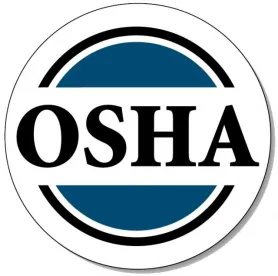OSHA recently released its final rule implementing the whistleblower provisions of the Consumer Financial Protection Act of 2010 (“CFPA”). The following are the key features of the rule:
-
Deadline for Filing a Complaint: A complaint must be filed within 180 days of the alleged retaliation. OSHA’s rule notes that such a complaint need not conform to the pleading standards for complaints filed in federal district court. 29 CFR Part 1985.103. Instead, the complaint must only “alert[] OSHA to the existence of the alleged retaliation and the complainant’s desire that OSHA investigate the complaint.”
-
Investigation of Complaints: After a complaint is filed, OSHA will conduct a confidential investigation to determine whether there is reasonable cause to believe that retaliation has occurred. OSHA only will investigate if the complaint states a prima facie case that the protected activity was a contributing factor in the adverse employment action. Even if OSHA finds reasonable cause to believe that the complainant’s alleged protected activity was a contributing factor in the adverse employment action, however, OSHA will not conduct an investigation if the employer can demonstrate by clear and convincing evidence that it would have made the same employment decision absent the employee’s protected activity. 29 CFR Part 1985.104.
-
OSHA’s Findings/Order: On the basis of all information obtained in its investigation, the OSHA Assistant Secretary will issue within 60 days of the filing of a complaint written findings as to whether there is reasonable cause to believe that there was a violation of the Dodd-Frank whistleblower provision. If the Assistant Secretary finds that reasonable cause exists, he/she will also issue a preliminary order providing relief to the complainant, which may include reinstatement or compensatory damages. The findings and/or preliminary order will inform the parties of the right to appeal the decision before an Administrative Law Judge (ALJ). 29 CFR Part 1985.105.
-
Appeal to ALJ: Either party may file an appeal of OSHA’s findings and/or order within thirty of days of receipt of the findings and/or order. Additionally, the respondent may seek reasonable attorneys’ fees, not to exceed $1,000, from an ALJ if the respondent alleges that the complaint was frivolous or brought in bad faith. 29 CFR Part 1985.106. An ALJ will review OSHA’s findings and/or order de novo in accordance with the rules of practice and procedure for administrative hearings before the Office of Administrative Law Judges. 29 CFR Part 1985.107.
-
Appeal to the ARB: Either party may file a written petition for discretionary review with the ARB within 14 days of the ALJ’s decision. The ARB then has thirty days to decide whether to grant review of the case. If it does not grant review, the ALJ’s decision becomes final. 29 CFR Part 1985.110.
-
Settlement: The parties may voluntarily settle their dispute, subject to approval by OSHA/the ALJ/ the ARB, depending on the stage of the proceedings at the time of settlement. 29 CFR Part 1985.111.
-
Judicial Review and Enforcement: Within 60 days of an ALJ or ARB final order, either party may file a petition for review of the order in the United States Court of Appeals for the circuit in which the violation allegedly occurred or the circuit in which the complainant resided on the date of the violation. 29 CFR Part 1985.112. A party may also bring a civil action for enforcement of orders or settlement agreement terms, or bring an original de novo action in the United States district court for the district in which the violation was found, under certain circumstances. 29 CFR Parts 1985.113 & 1985.114.
The foregoing are substantially similar to the rules applicable to claims under Section 806 of SOX. The arguably relaxed standard and other features arguably are likely to encourage complainants’ counsel to pursue claims through the DOL’s adjudicative system.



 />i
/>i

